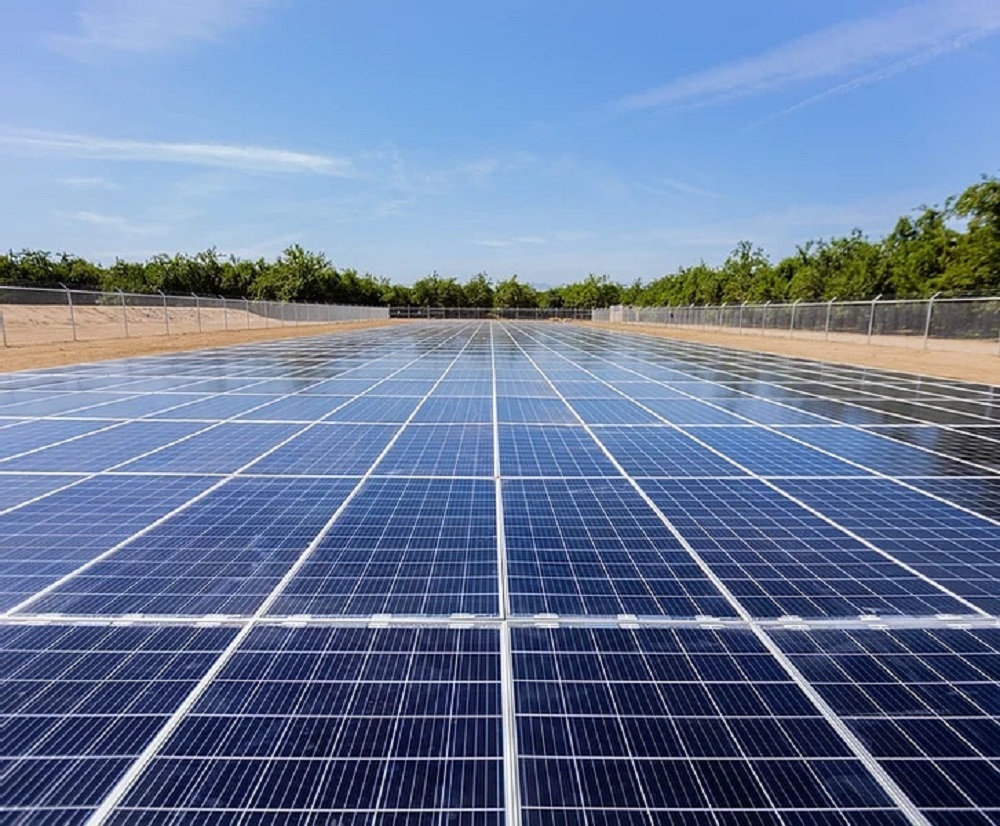
Jim Tyler, CEO of solar tech specialist Erthos, says that reducing the cost of solar electricity will be needed to unlock the next chapter of the energy transition: a green hydrogen economy.
Global additions of renewable power capacity are expected to jump by about one-third this year, says the International Energy Agency (IEA). This is due to a combination of factors, including the US Inflation Reduction Act (IRA), the war in Ukraine, and the technology adoption cost curve. However, we’ve only just begun to tap solar’s immense potential.
According to Jim Tyler, CEO of solar technology company Erthos, reducing the cost of solar electricity will be key to unlocking the next chapter of the energy transition: a green hydrogen economy. In a recent interview, Tyler explained how driving down solar’s levelized cost of energy (LCOE) can accelerate the adoption of solar for green hydrogen production. While the startling drop in solar panel prices – from $5/W in 2005 to around $0.25/W today – has driven the industry’s growth, ongoing LCOE reductions remain imperative.
“You have to get to below $20/MWh,” said Tyler of the solar electricity price needed to produce competitive green hydrogen. “There are ways to do that. There are ways to get to below $20.”
The 2023 LCOE report by Lazard put solar on parity with wind at $24/MWh.
Erthos, which was founded by Tyler in 2019, slashes costs through a novel “solar skin” design that eliminates racking and piles by placing panels directly on the ground. The technology is being embraced by developers like Industrial Sun, which announced a 100 MW solar project using Erthos technology in December 2022. This approach reduces steel usage by 35 tons per megawatt, halves installation time and real estate needs, and lowers O&M costs. The carbon footprint of steel manufacture is 1.4 tons to 1.65 tons of CO2e/ton of steel.
The flat to ground solar also reduces mechanical stress and microcracking on panels, boosting energy yield and project return on investment, according to a white paper by Erthos. What about periodic flooding of the solar array that flat mounted solar might encounter in the field, you ask? Tyler, who served as VP of EPC for First Solar in the past, points to the intrinsic waterproof design of both solar panels and balance of system that can withstand periodic flooding.
By streamlining the system, Erthos delivers an estimated 20% lower LCOE compared to single axis tracker based solar construction. While industry observers initially doubted putting panels on the ground, Erthos has now contracted over 200 MW of its revolutionary design.
“It’s just a matter of time until all module providers recognize that and ultimately sign up to this technology,” said Tyler, noting that nine leading module manufacturers have already partnered with Erthos.
Others are pushing LCOE lower in different ways, like tracker manufacturer Nextracker introducing systems with fewer parts. But why does shaving cents off the cost of solar matter so much? Because it can make the difference in scaling up green hydrogen to displace fossil fuels.
“I’m a very firm believer that we are not going to electrify our way out of the [climate] problem,” said Tyler. “We have to solve the problem another way. We have to find a renewable replacement for fossil fuel.”
That replacement is hydrogen. Clean hydrogen produced by splitting water with renewable electricity offers a sustainable fuel for transportation, industry, and more. But historically high production costs have limited adoption.